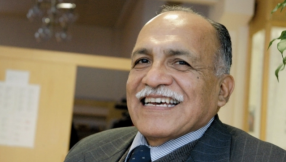
* Partner Post
HIV is among the most serious health risks in contemporary society all over the world and especially in America. Despite its extremely serious nature, most people have only a vague idea of how it is spread, what to do to reduce the risk of contracting it, and the treatment options.
How Is HIV Spread?
HIV can only be spread by the transfer of body fluids like blood, semen, rectal fluids, pre-seminal fluids, vaginal fluids, and breast milk from a person already infected by HIV. The transmission is only possible when the infected fluids come in touch with a damaged tissue or a mucous membrane that can absorb the fluid or directly inject into the bloodstream with a syringe or by a needle. Mucous membranes are typically found inside the opening of the penis, the vagina, inside the rectum, and the inside of the mouth.
In America, most of the HIV infections are spread by unprotected sex with infected persons, sharing injection equipment like needles with an infected person, and to babies from infected mothers during pregnancy, childbirth, and breastfeeding. Contrary to popular belief, HIV cannot be spread by casual contact with an infected person like shaking hands, hugging, or even closed-mouth kissing, and by coming into contact with doorknobs, toilet seats or dishes used by persons with HIV.
Treatment
To treat HIV, patients are prescribed medicines called antiretroviral to slow down the progress of the HIV retrovirus. Usually, a combination of antiretroviral drugs is given for the most effective treatment. The drug combination and doses are decided after viral load testing to establish the extent of the HIV virus. While there are several technologies available, only branched DNA (bDNA) assays are approved by the FDA for HIV-1 and HCV viral load testing. This technology for signal amplification is favored because it can be fully automated and lessens the labor required and the errors associated with manual processes. Branched DNA assays are sophisticated tests using complex chemicals and enzymes that can be procured from reputable sources like https://www.mybiosource.com/.
Reducing the Risks of HIV Infection
While anyone can get HIV, the chances of contracting it can be reduced by getting to know your partner's HIV status and if need be, getting it tested. Ensure you have vaginal or anal sex only with condoms and limit the number of your sexual partners to reduce the risk of HIV transmission. Insist on periodic testing for STDs for both yourself and your partner as having STD can significantly increase the risk of getting HIV. Consult your caregiver about pre-exposure prophylaxis (PrEP) if you are in a high-risk category but do not have HIV. Desist from drug use, and if it's really necessary, use only sterile injection equipment and make it a point not to share it with others.
Conclusion
Since there's no established cure for HIV, the best way is to stay safe, however, if you do get HIV, make it a point to get appropriate medical care and take the prescribed medicines daily to lead as healthy a life as possible.













